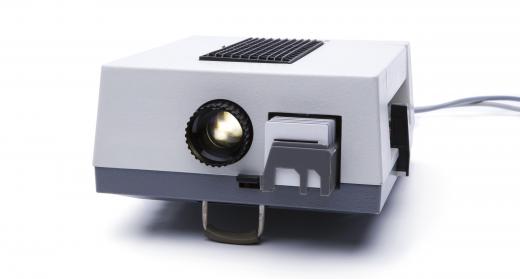A cool beam lamp is a type of light that is designed to redirect its heat away from the light beam. These lamps may still create as much waste heat as regular lamps, but their designs allow them to vent the heat to the sides or behind the bulb. This is typically achieved with a dichroic reflector that can reflect visible light while allowing infrared light to pass through. This can result in a substantially cooler light beam that may be useful in applications in which a heat-sensitive object must be illuminated.
A dichroic reflector works by reflecting one particular spectrum of light while allowing all other light to pass through. Dichroic reflectors and filters are useful in a variety of diverse applications, from theatrical work and 3D movies to jewelry. In the case of cool beam lights, they are designed to reflect the visible spectrum of light through the front of the lamp while invisible infrared light passes through and exits through the back of the lamp.

An early use for cool beam lamps was in slide projectors. Since the light source in a slide projector is typically very close to the slide, using a cool beam can help avoid the potential of damaging the slide. Most halogen lamps in many different application now use the dichroic technology. Lamps with this design may be found in both residential and commercial applications. Light from a cool beam lamp is typically marked by being cooler and whiter than that of other lamps.

While cool beam lamps may be useful for situations in which a heat-sensitive object must be illuminated, they may be dangerous in certain other uses. Many recessed light fixtures may pose a danger of fire if used with a cool beam lamp. This is because the infrared heat energy that passes through the back of the lamp may be trapped within the recess, creating high temperatures and posing a potential fire hazard. Though most halogen lamps use dichroic reflectors, special bulbs for applications such as these are typically available as well.
An alternative to cool beam lamps in applications for which they may be dangerous is the light-emitting diode (LED) lamp. These bulbs may produce a light that is even cooler than a halogen lamp and are safe to install in recessed lighting applications. LED lamps are also typically available in a variety of different designs to match various incandescent bulbs, including halogen lamps. They are usually much more expensive than their incandescent counterparts, but may last far longer.
